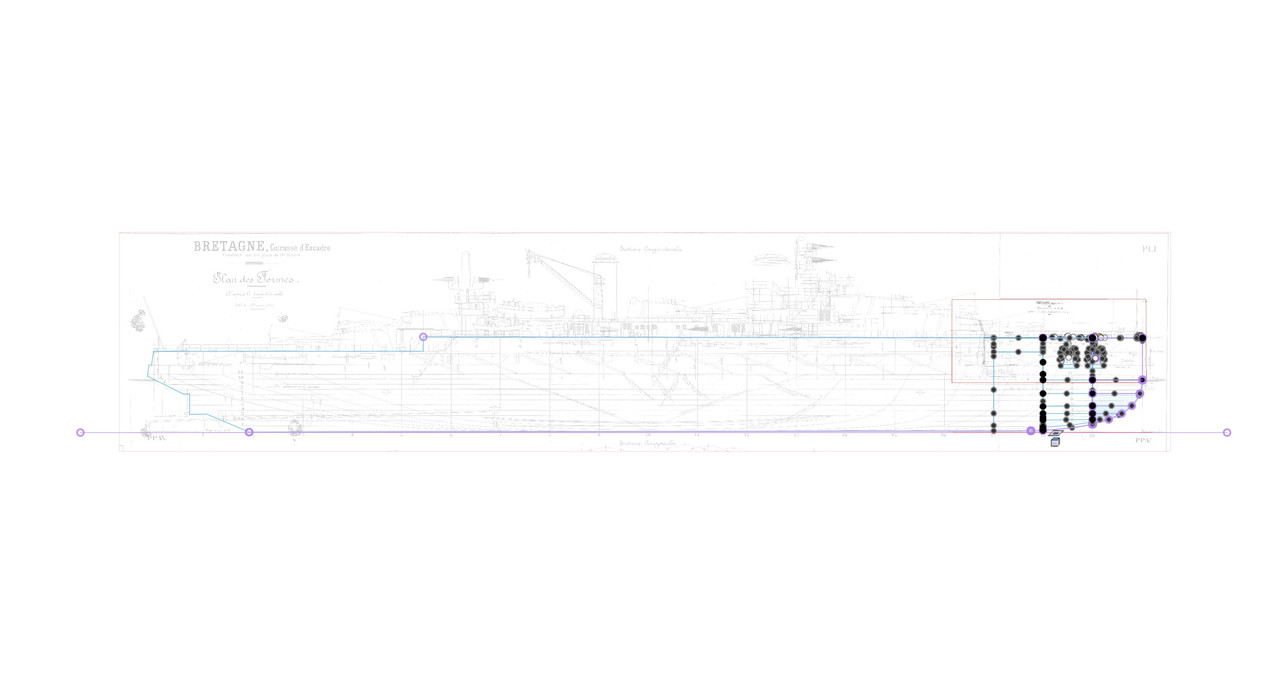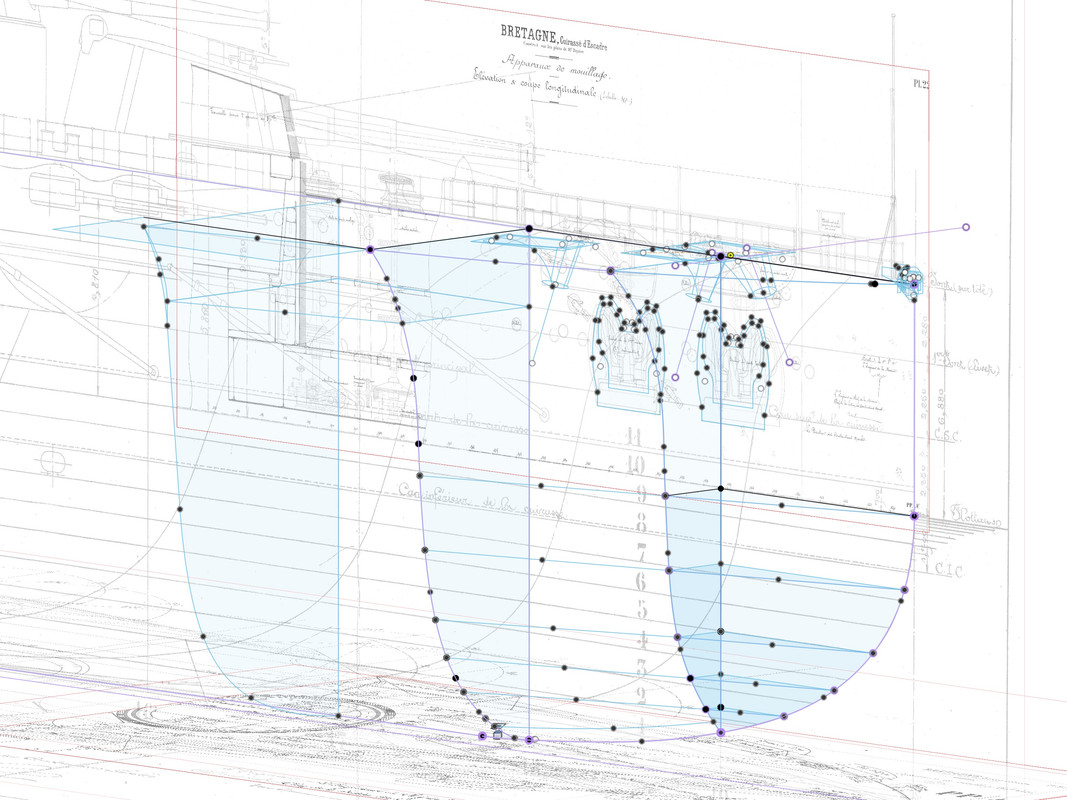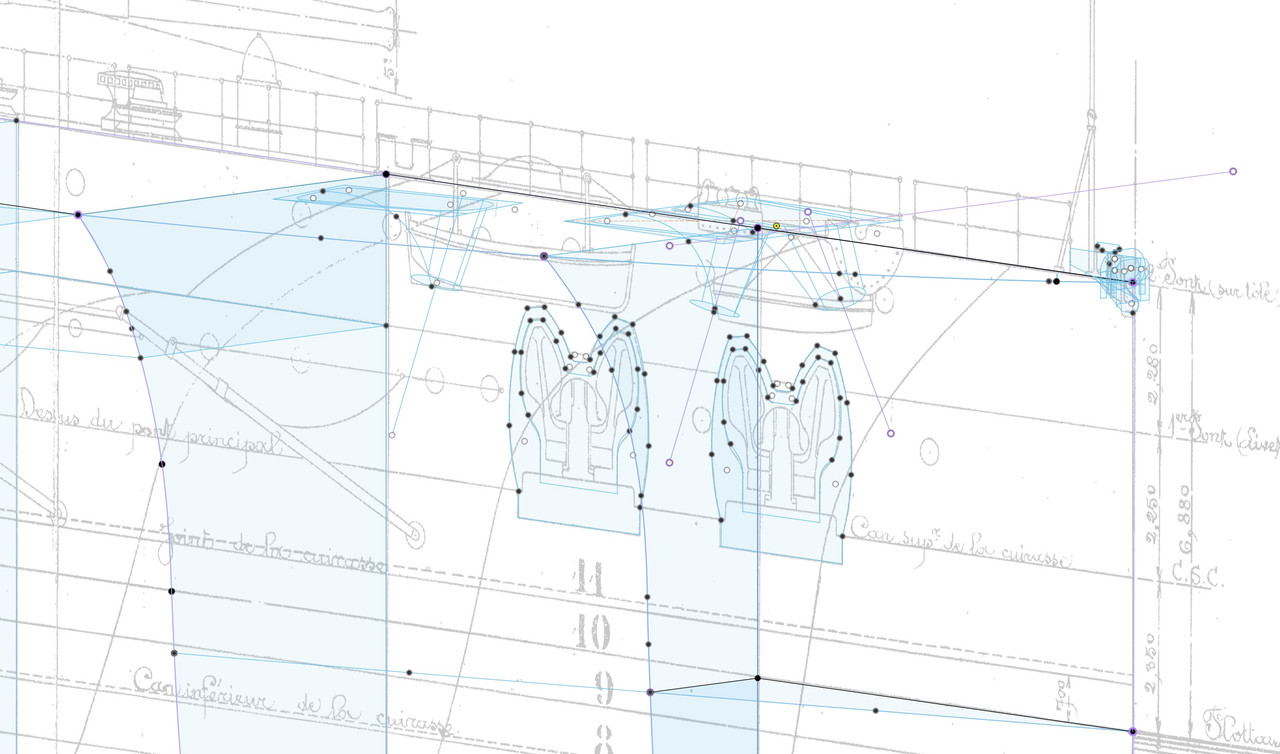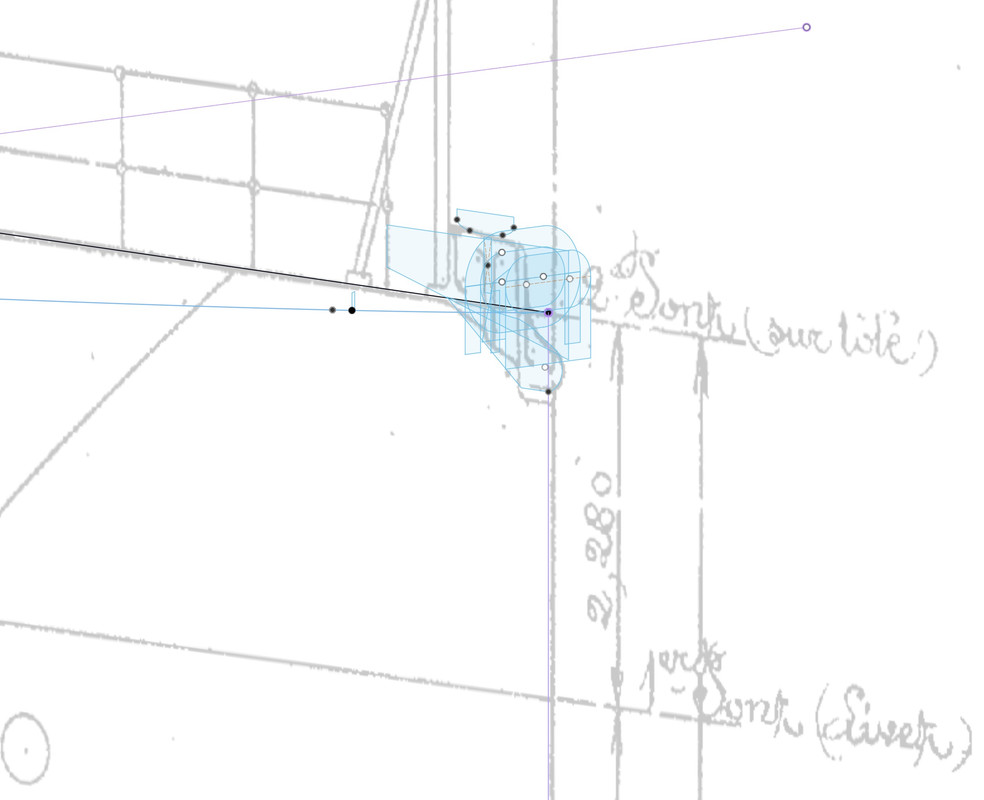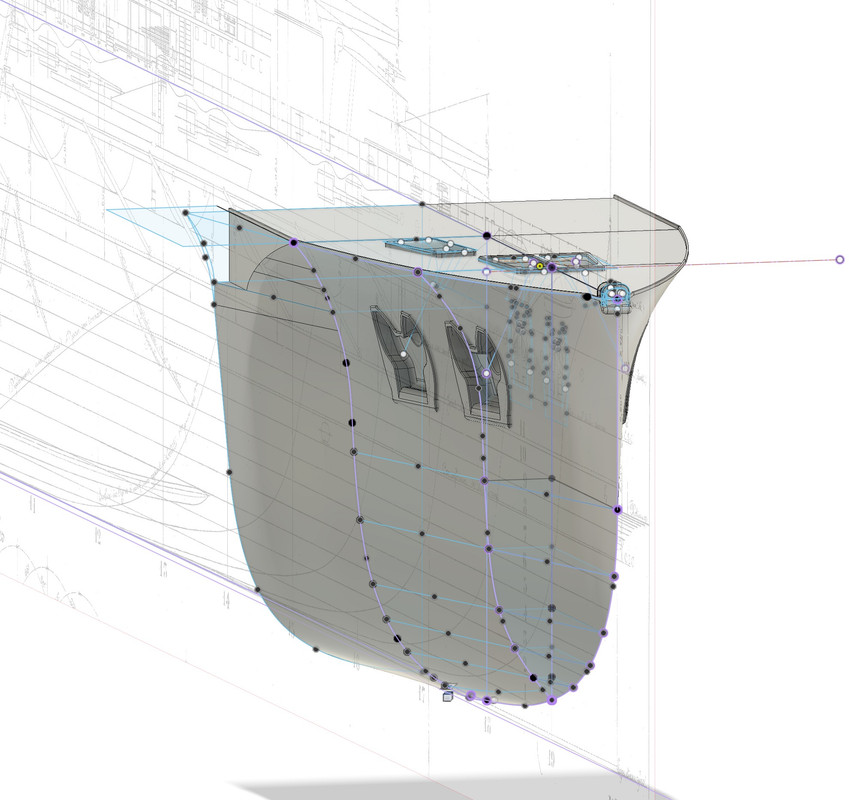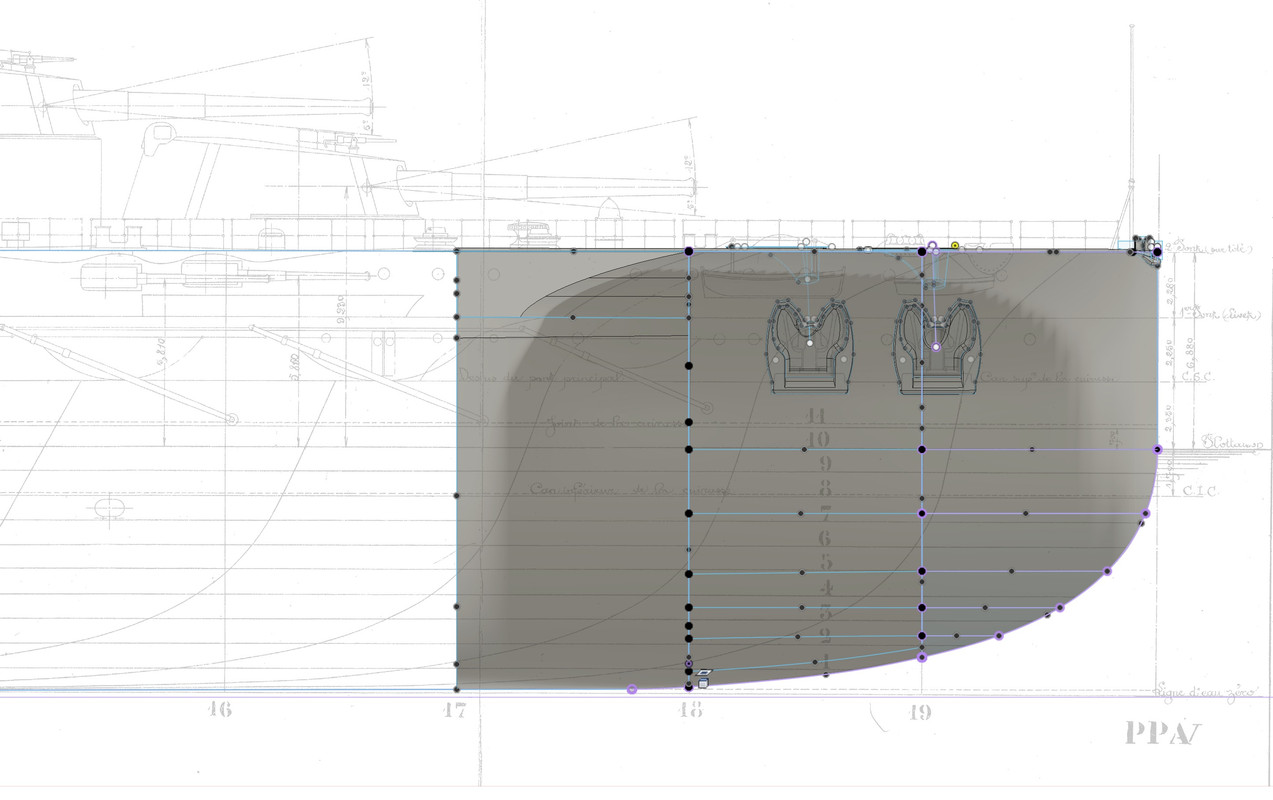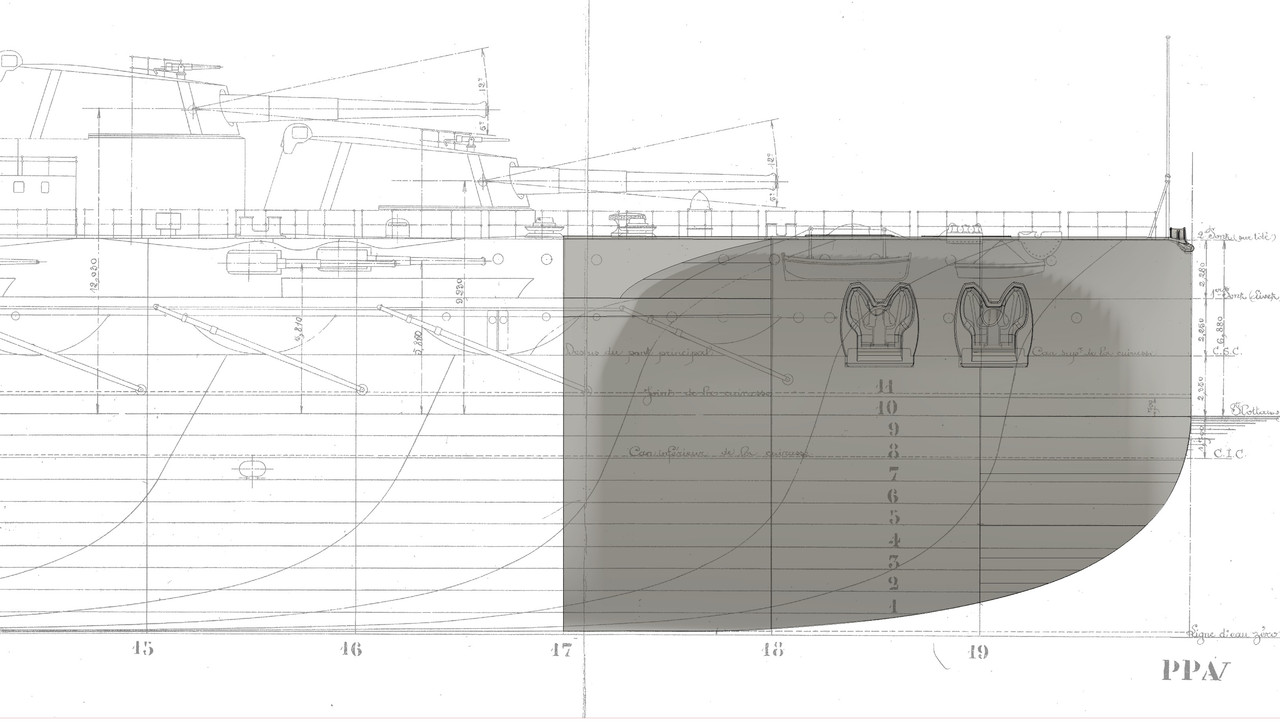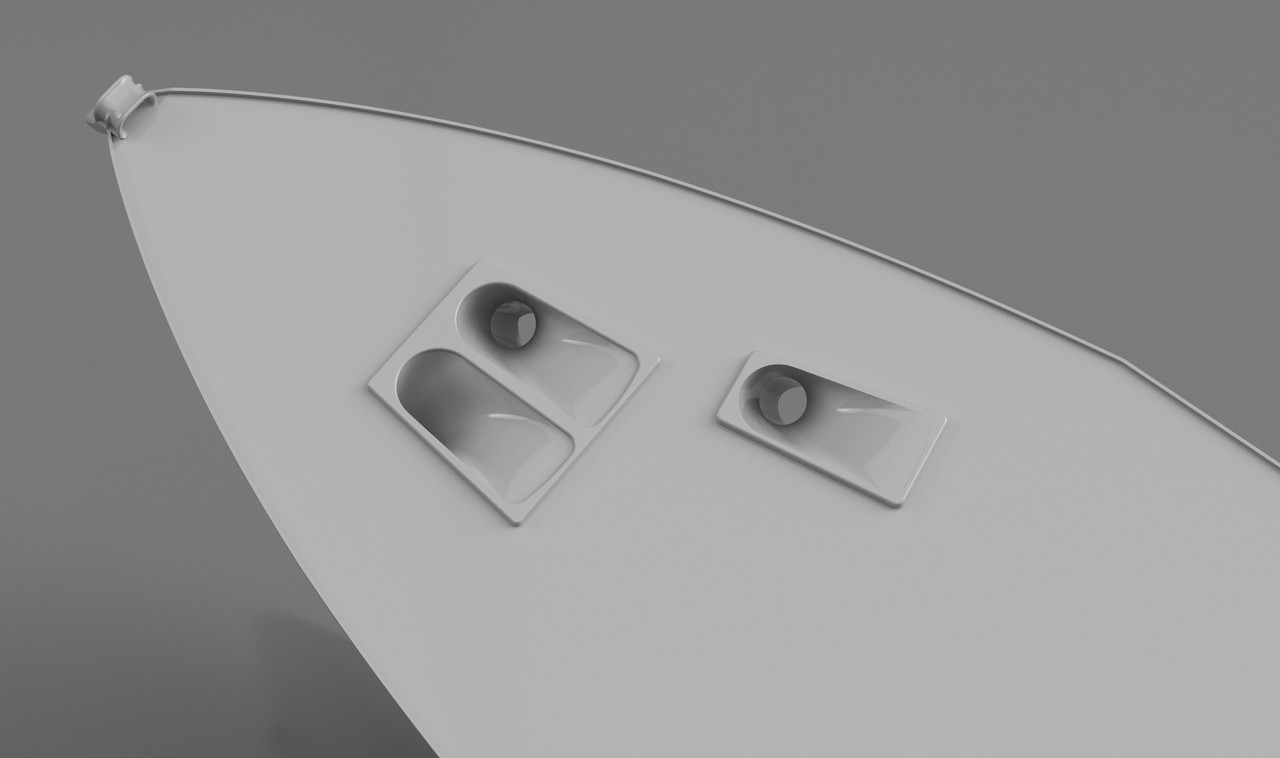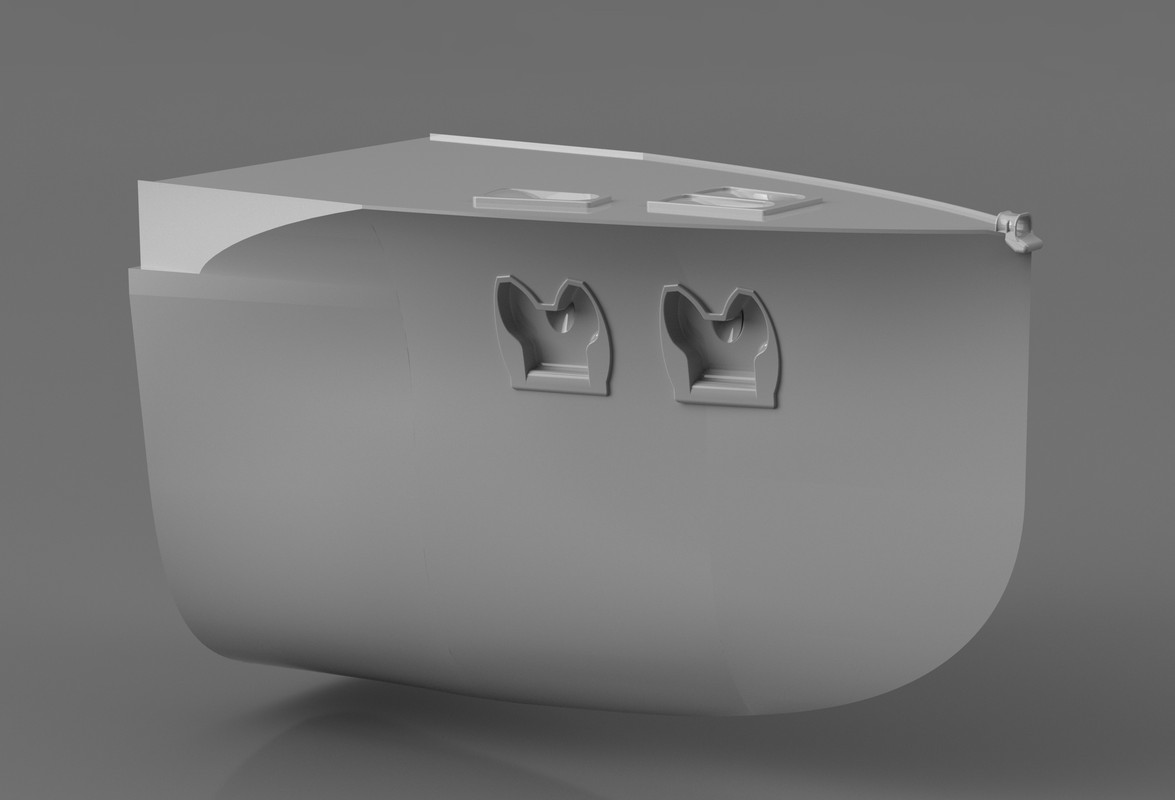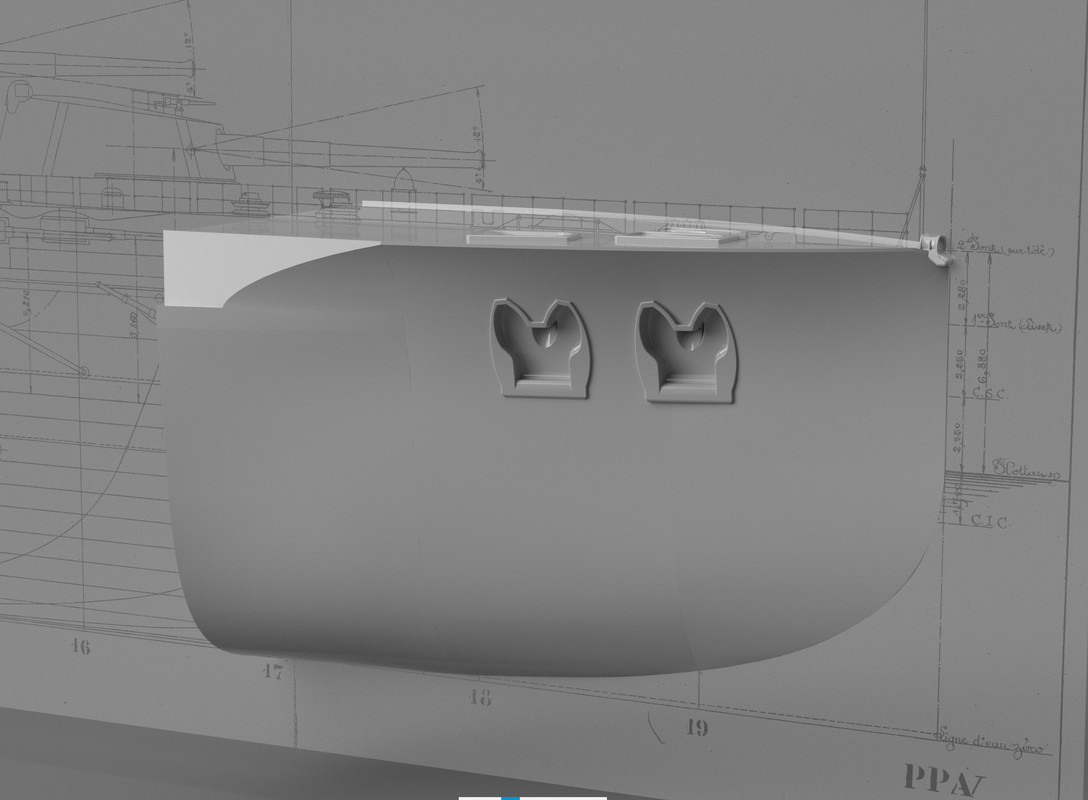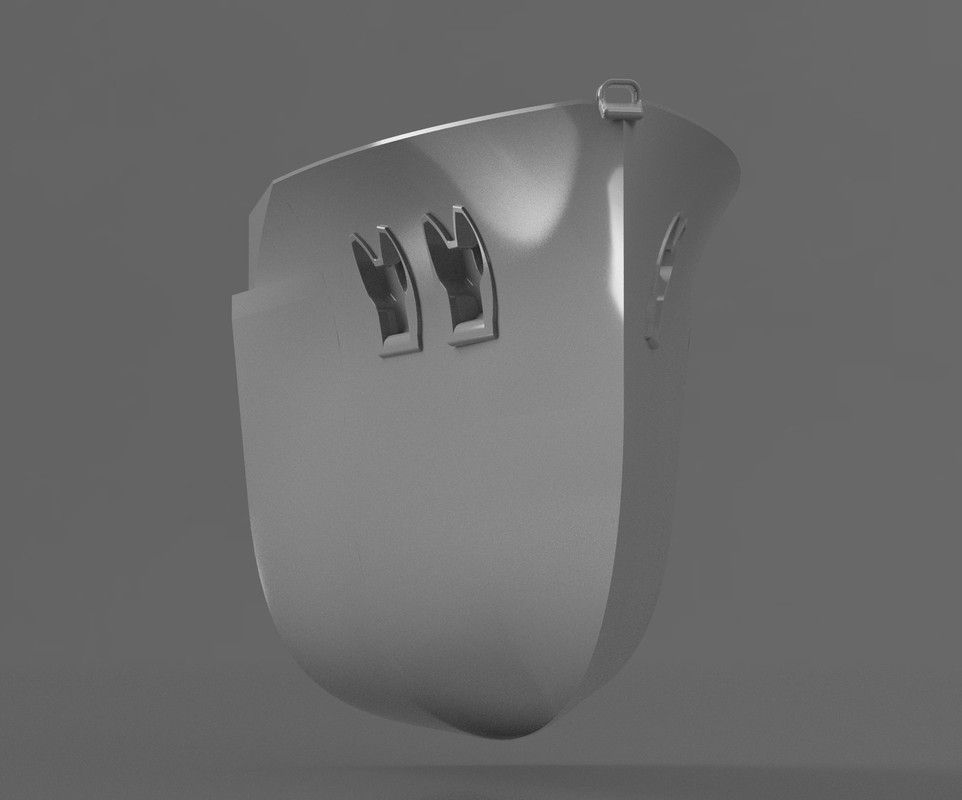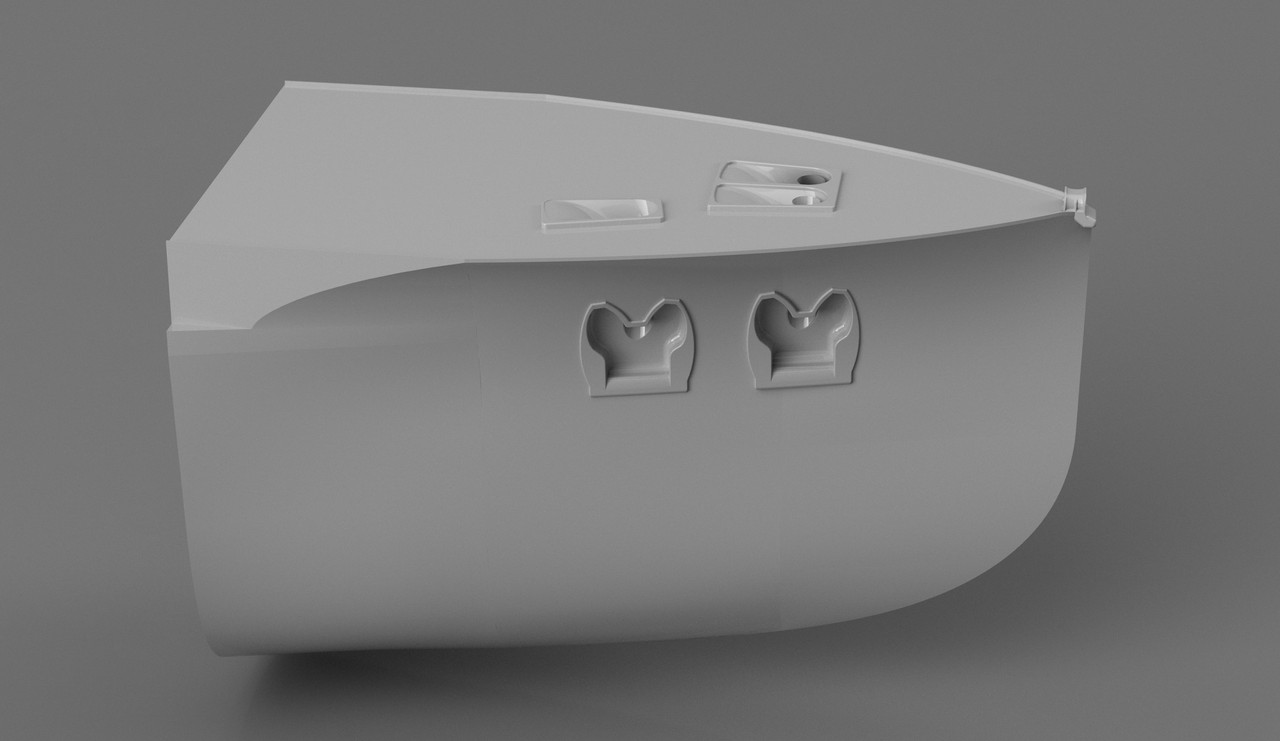
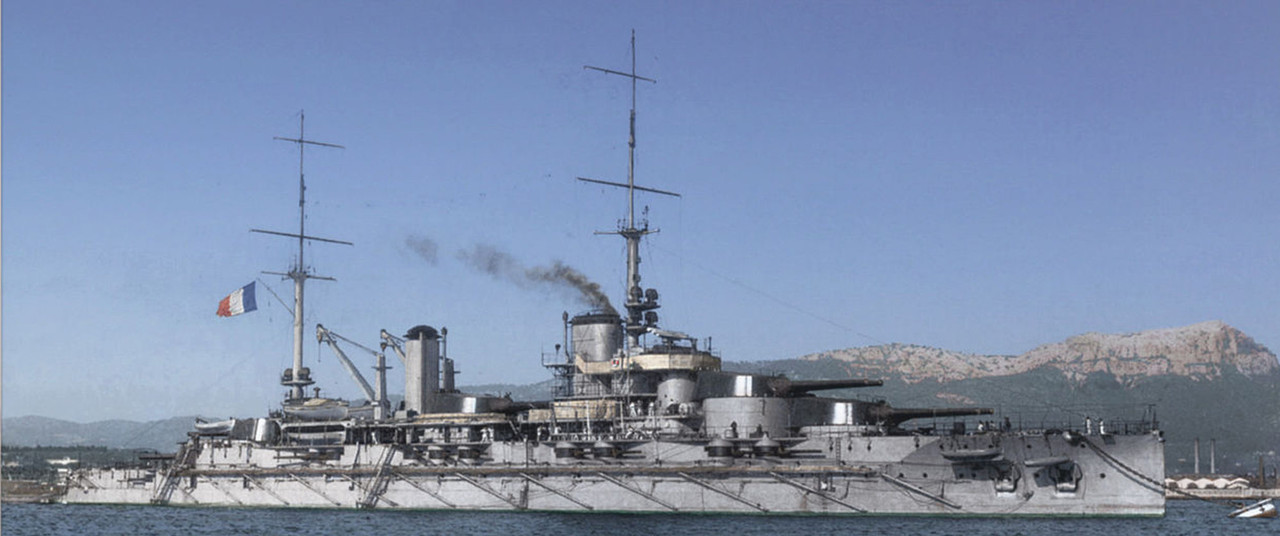
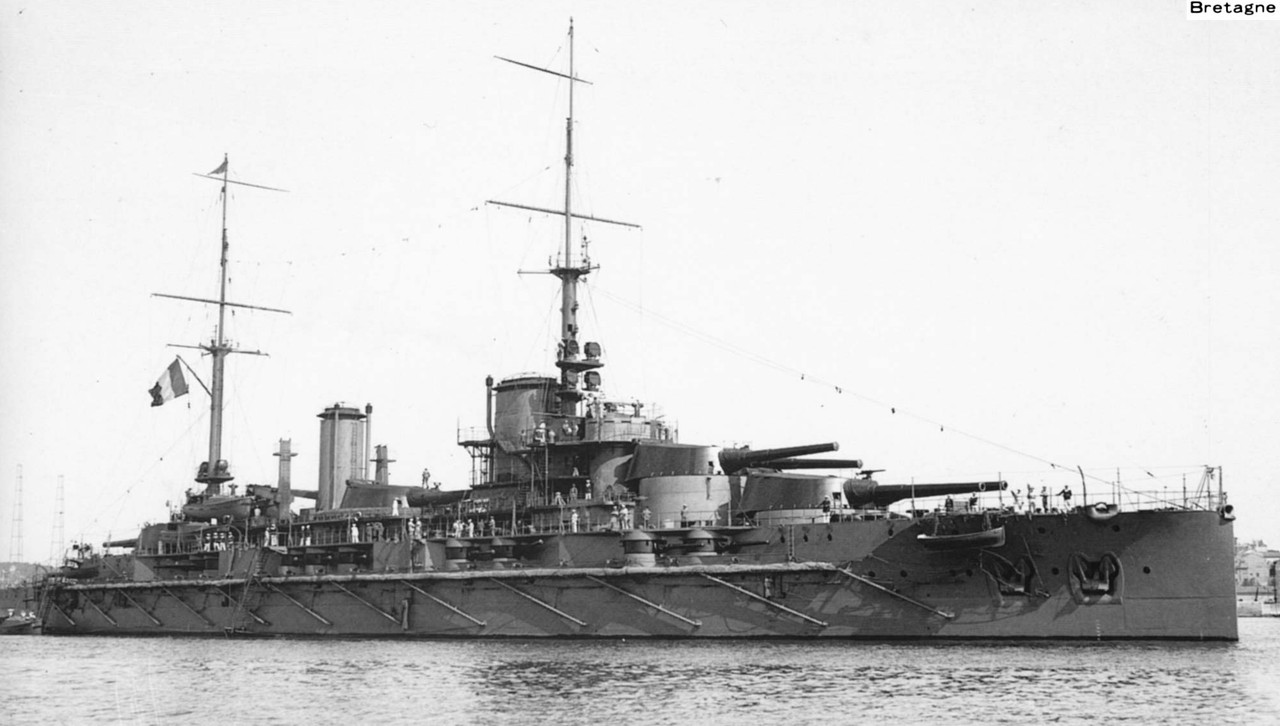
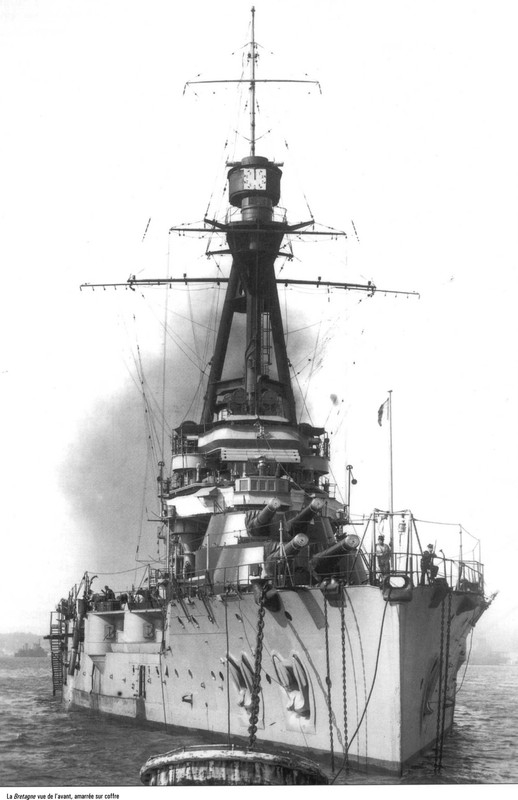
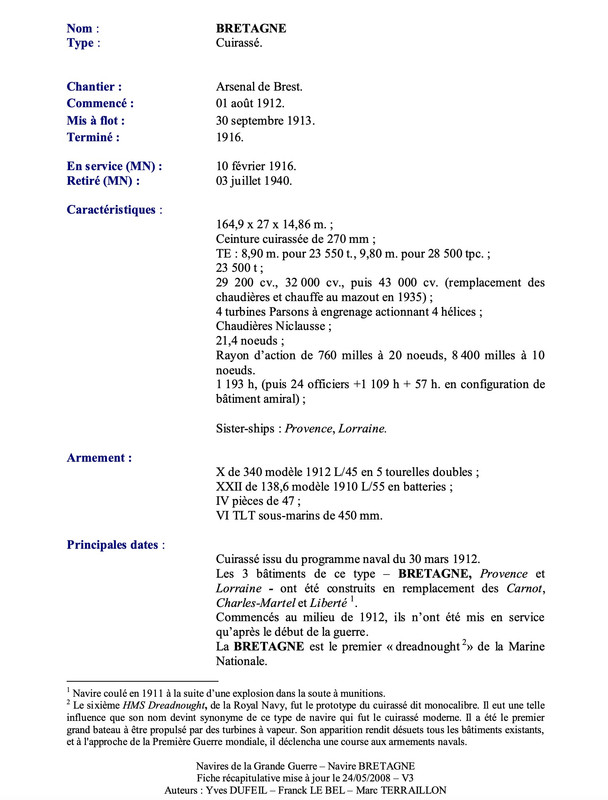
Name: Type:
BRETAGNE Battleship.
Worksite :
Started: Floated: Completed:
Brest Arsenal. August 01, 1912. September 30, 1913. 1916.
In service (MN): Withdrawn (MN):
February 10, 1916. July 03, 1940.
Features:
164,9 x 27 x 14,86 m.;
270 mm armored belt; TE: 8.90 m. for 23,550 tons, 9.80 m. for 28,500 tpc.;
23 500 t;
29,200 hp, 32,000 hp, then 43,000 hp. (replacement of
boilers and oil heating in 1935); 4 geared Parsons turbines driving 4 propellers;
Niclausse boilers;
21.4 knots;
Range of 760 miles at 20 knots, 8,400 miles at 10
knots.
1,193 h, (then 24 officers +1,109 h + 57 h. in flagship configuration);
Sister-ships: Provence, Lorraine.
Armament:
X of 340 model 1912 L/45 in 5 double turrets; XXII of 138.6 model 1910 L/55 in batteries; VI TLT 450mm submarines.
IV pieces of 47;
Battleship from the naval program of March 30, 1912.
The 3 buildings of this type BRITTANY, Provence and
Lorraine were built to replace the Carnots,
Charles-Martel and Liberty.
Started in the middle of 1912, they were only put into service
Main dates:
only after the start of the war. BRITTANY is the Navy's first dreadnought³
National.
Ship sunk in 1911 following an explosion in the ammunition bay.
The sixth HMS Dreadnought, of the Royal Navy, was the prototype of the so-called monocaliber battleship. It had such an influence that its name became synonymous with this type of ship which was the modern battleship. It was the first large ship to be powered by steam turbines. Its appearance rendered all existing buildings obsolete, and with the approach of the First World War, it sparked a naval arms race.
Ships of the Great War - Ship BRITTANY
Summary sheet updated on 05/24/2008 - V3 Authors: Yves DUFEIL - Franck LE BEL - Marc TERRAILLON
February 03, 1915 January 13, 1916: in trials.
September 1915: armament and trials in Toulon.
May 07, 1916: joined the Naval Army after training.
May 10, 1916 assigned to the 1st Division of the 1st Wing, stationed at Argostoli and Corfu.
21 June 1916 – 05 December 1916: operation in Greece. 01.07.1916 included in the strength of the 1st division of the 1st
Naval Army squadron (VA Gauchet) July 01, 1918: included in the strength of the 1st division of the 1st
Naval Army Squadron (CA Exelmans, then CA German
to July 15, 1918; C in Chief of the Naval Army VA Gauchet
since December 16, 1916). June 11, 1919 mutiny.()
June 12, 1919: BRITTANY returns to Toulon for its first
major overhaul that will last two years.
1919-1921: first major overhaul, installation of the tripod. 14 June 1921 reassigned to the 1st Division of the 1st Wing.
25.07.1921 naval review in Le Havre with Provence and France, in the presence of Mr. Millerand, president of the
Republic.
1922 1925 exercises and training on the coasts of Provence and North Africa, cruises and maneuvers in
Atlantic and Channel.
1924-1925: overhaul at the Toulon arsenal. 1926 1927 normal squadron activities on the coasts of
Provence and North Africa.
1927 1928 overhaul at the Toulon arsenal.
1928 1930: joined the Escadre in Brest, then in Casablanca and was
back to Toulon. Cruises and tactical exercises on the coasts of Algeria, Provence and Corsica.
1931-1933 major overhaul in Toulon.
1934: overhaul at La Seyne.
1935: BRITTANY is assigned to the 2nd Wing.
May 17, 1935 exercises in the Bay of Douarnenez.
1936 with the 2nd line division, BRITTANY leaves for a great cruise in the central Atlantic (Dakar, Casablanca, Vigo), then on the coasts of Brittany, Cherbourg,
Dunkirk for fire schools.
1937-1938 participates in fire schools and combined exercises between the two squadrons from Cherbourg to Brest
July 3, 1939: Brittany leaves Brest with Lorraine for Toulon. The 2nd Line Division is assigned to the 2nd Squadron of the Mediterranean Fleet. BRITTANY participates in convoy escort missions between Marseille, Ajaccio, Oran and Gibraltar.
March 10, 1940 Joins occasional party, Force X, to transport gold shipment to Halifax. She does the
With all reservations because the ship enters the arsenal the next day. Probable confusion with the battleship Provence.
Ships of the Great War - Ship BRITTANY
Summary sheet updated on 05/24/2008 - V3 Authors: Yves DUFEIL - Franck LE BEL-Marc TERRAILLON
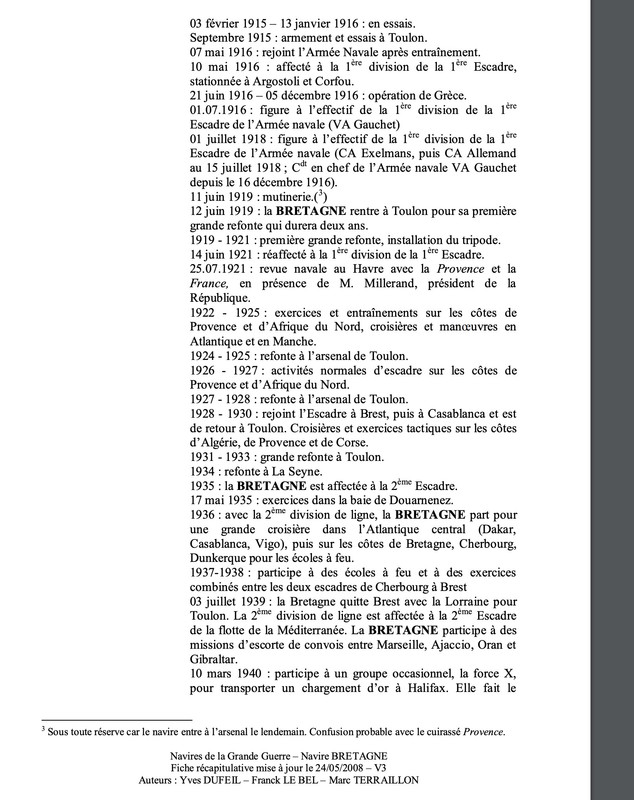
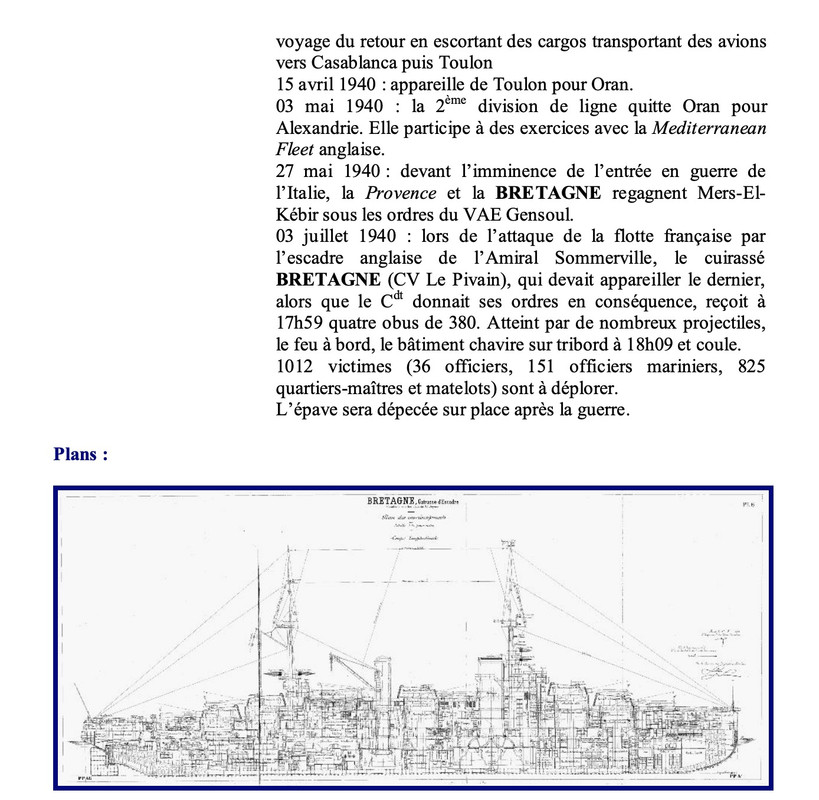
She was commissioned in 1915 with a battleship Courbet type hull. She was modernized in 1919-1920 and then completely refitted at the La Seyne-sur-Mer shipyards from 1932 to 1935.
return trip escorting cargo ships carrying aircraft to Casablanca and then Toulon
April 15, 1940 sets sail from Toulon for Oran. May 3, 1940 the 2nd line division leaves Oran for
Alexandria. She participates in exercises with the English Mediterranean Fleet. May 27, 1940 in the face of the imminence of the entry into the war of Italy, Provence and BRITTANY regain Mers-El Kébir under the orders of the VAE Gensoul.
July 03, 1940 during the attack on the French fleet by Admiral Sommerville's English squadron, the battleship BRETAGNE (CV Le Pivain), which was to set sail last, while the Cd gave his orders accordingly, received at 5:59 p.m. four 380 shells. Hit by numerous projectiles, fire on board, the ship capsized to starboard at 6:09 p.m. and sank.
1012 victims (36 officers, 151 petty officers, 825 quartermasters and sailors) are to be deplored.
The wreckage will be dismantled on site after the war.
Bibliography:
Robert Dumas & Jean Guiglini, Les cuirassés de 23 500t, éditions la Presse, 2005.

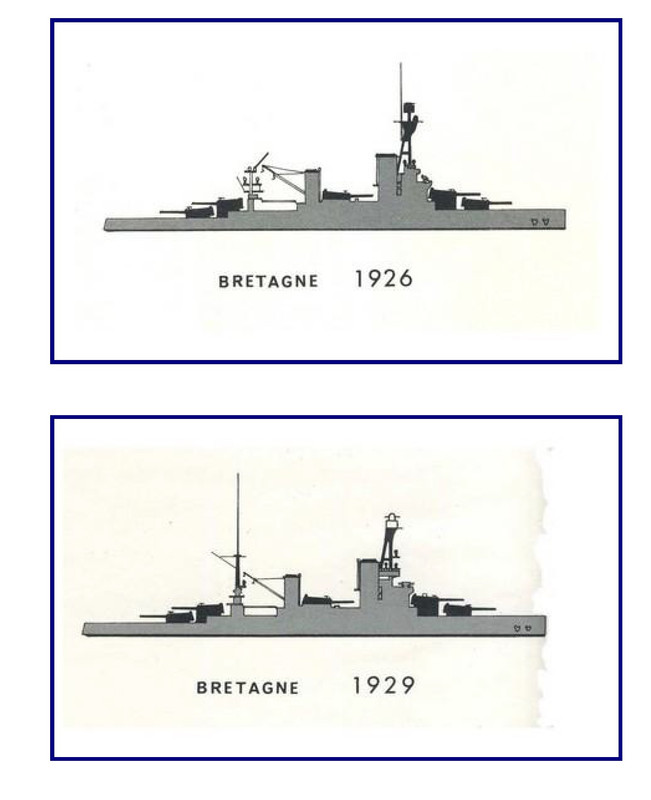
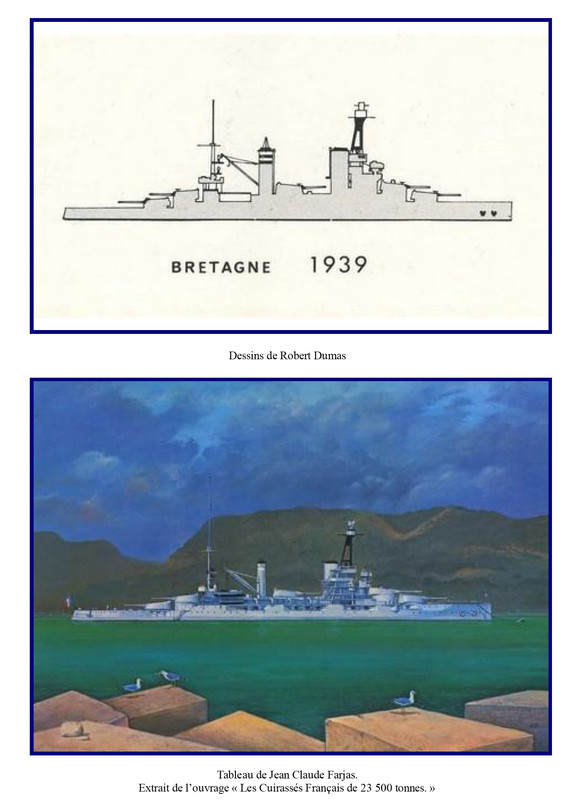
I'm starting this project slowly because I have another ship to finish before I get 100% into it. I'm not sure what version I'll be representing yet. 1940 would be nice, but I don't have the documentation (plans) of the new superstructures. And at the same time this building has a lot of charm when it was launched.
The HD plans are available here:
https://drive.google.com/file/d/0B32-8Z ... WHsDVQ0_mQAbout these plans:
Some plans do not match well with each other, especially the detail plans of the bow and the positioning of the hawks. I had to use photos to deduce the reality.
For the moment I stopped at couple 17.
I'm trying to familiarize myself with the hull, because the fact that it has side cannons makes it a bit complicated. You have to take your time to avoid making too many mistakes that will be difficult to make up for later. It is also necessary to think about how to organize the number of elements and the printing, the cutting of the model into pieces easy to assemble.
This boat will be 83 cm long, it will be printed in 4 blocks, as for the SS Delphine (1/100). They are almost the same size.
I'll ask Jim Baumann if he had made plans of the redesign superstructures, which he could have made to make his model. But this is not the 1934 version either...
https://www-modelwarships-com.translate ... r_pto=wappI think that we can date the model represented here around 1929.
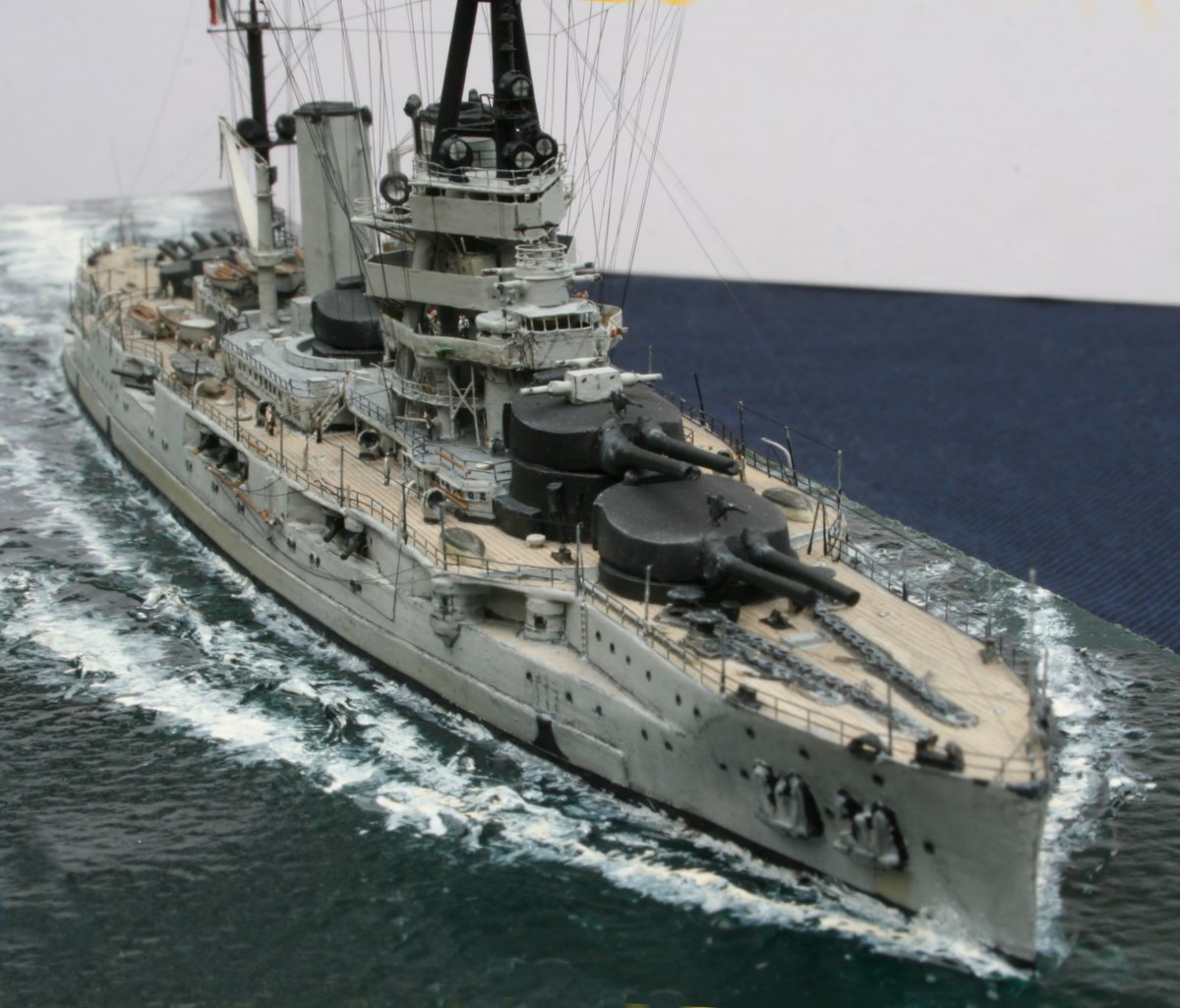
In comparison, this is probably the version of the superstructures after the 4th and last redesign of 1934 (guns in grey), enlarged bridge glass, protected walkaways, etc..:
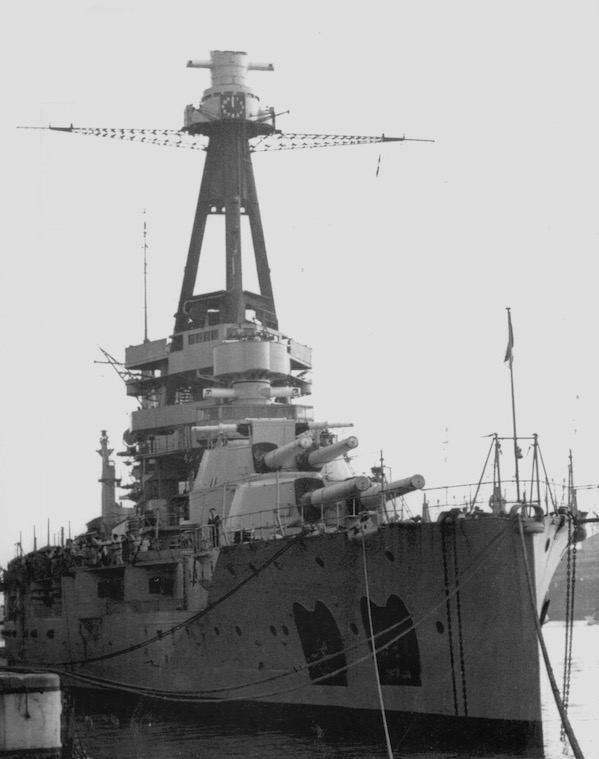
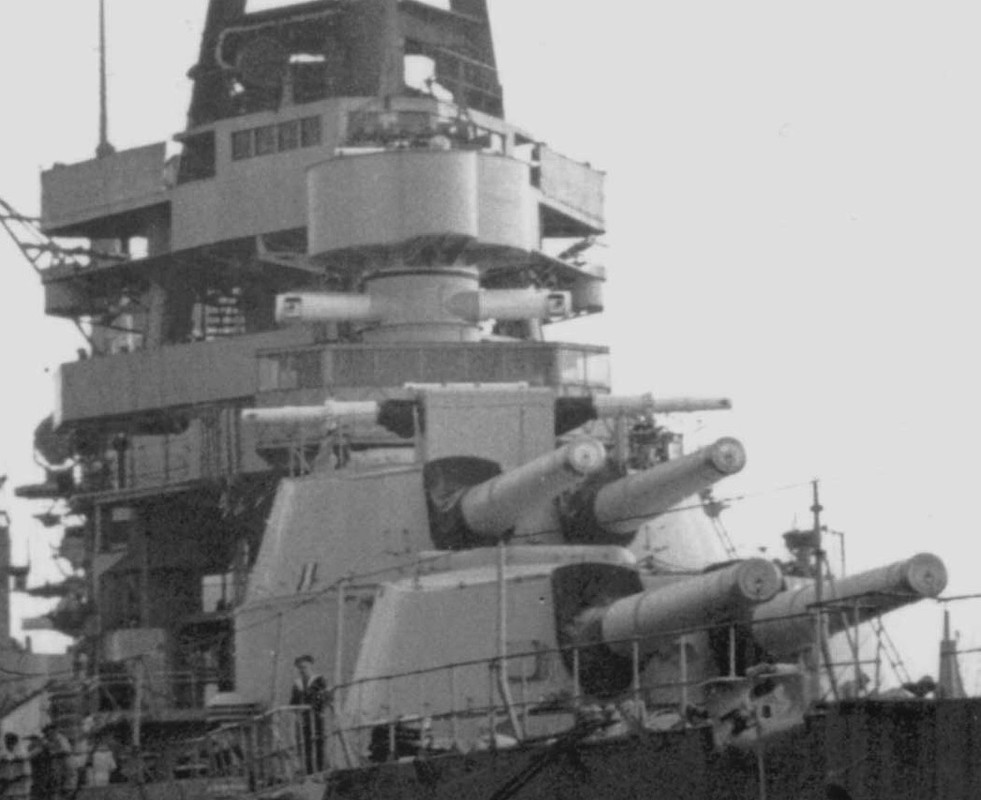
The redesign program as described very well on Wiki (except for the bridge superstructures):
First refitThis first redesign, which took place only four years after the building was put into service, raises the question of its adequacy to the needs of the time.
On this occasion, the elevation of its main gun was increased from 12° to 18° to allow it to engage targets at greater range.
The four lateral 138 mm casemate guns located at the front of the ship were removed, as well as the casemates, as it was found that outside of good weather, these guns were constantly unusable due to the sea. The 75 mm anti-aircraft guns model 1897 were replaced by four guns, of the same caliber, model 1918, positioned amidships.
The foremast was replaced by a tripod mast and its main mast was reduced to allow the battleship to deploy a captive balloon for the adjustment of its artillery.
It was also installed a Vickers fire direction equipped with a rangefinder on top of the new tripod mast and two rangefinders on each side of the superstructure for the 138 mm guns. An attempt was made to install catapults for a reconnaissance aircraft on the No 2 and No 4 turrets, but they proved to be difficult to use and were removed during the second redesign.
Bretagne returned to active service, as flagship of the Mediterranean fleet, and remained in the 1st division of the 1st squadron. On 25 July 1921, she took part in the naval review in Le Havre, with her sister-ship Provence and France, in the presence of the President of the Republic at the time, Alexandre Millerand.
Back in Toulon in September of the same year, she was used as a target by Lieutenant Paul Teste for a series of dive-bombing training.
Still with the battleship France, she carried out a firing exercise on June 28th 1921, targeting the Austro-Hungarian battleship SMS Prinz Eugen south of Porquerolles island.
On 18 July 1921, the Bretagne, accompanied by the France and the Paris, began a cruise in the ports of the Bay of Biscay and the English Channel. On this occasion, the France hit a reef which was not mentioned on any map and sank, its crew being rescued by the two other ships, except for three sailors.
On June 22, 1923, the Bretagne ran aground in the Bizerte canal without damage.
The Provence replaced the Bretagne as flagship on 1st September 1923, while the battleship was preparing for its second refit.
Second refit The battleship underwent a major modernization between 1 May 1924 and 18 September 1925.
As in the first one, the main artillery was modified to increase the elevation from 18° to 23°, which allowed it to reach a range of 23,700 meters. It also received two new rangefinders for its flak.
Part of her forward armour was removed to lighten the bow and increase her forward freeboard, while a group of coal-fired boilers was replaced by oil-fired ones and the catapults installed on the main batteries were removed.
At the end of her refit, Bretagne resumed her position as flagship of the Mediterranean fleet and will convoy Georges Leygues, Minister of the Navy, to Malta for an official visit between 27 April and 1 May 1926.
Third refitNew oil-fired boilers were installed during this modernization, which lasted from November 15, 1927 to May 12, 1928, and also saw the improvement of the fire direction and the replacement of the Vickers model by a French Saint Chamond-Granat system, as well as the replacement of all the rangefinders, except for those on each of the turrets. Two rangefinders were added to the gunnery control station, one at the top of the foremast and another at the base of the mainmast. A rangefinder is added at the weapons control station to measure the distance between the target and the sheaves. A rangefinder was placed on the No. 2 turret.
On 10 May 1930, Bretagne participated, with Provence and Paris, in a fleet review in front of Gaston Doumergue, President of the Republic, to celebrate the centenary of the conquest of Algeria by France.
Fourth refitIt began on July 1, 1932 and ended on November 12, 1934, at the La Seyne-sur-Mer shipyards and marked the end of the last coal-fired boilers on the ship, which were replaced by newer, more compact oil-fired boilers, allowing the conversion of boiler room No. 2 into an oil tank. Pearsons geared turbines are installed to replace the high pressure turbines.
The four 138 mm side guns located aft were removed, along with their casemates, while the four 75 mm anti-aircraft guns were replaced by eight guns of the same caliber, model 1922. The torpedo launchers were also removed, a new weapons control station was installed, as well as two firing directors for the flak with rangefinders.
Bretagne joined the 2nd Division of the 2nd Wing for manoeuvres in the Azores with Provence and Lorraine from 11 May 1935, before returning to her home port of Brest on 16 June of the same year.
After some additional modifications, including a replacement of its rangefinders and fire direction, the 2nd Division was transferred to the Mediterranean fleet on June 10th 1939.
https://fr.wikipedia.org/wiki/Bretagne_(cuirass%C3%A9)
Some pictures of the beginning of the 3D design.
